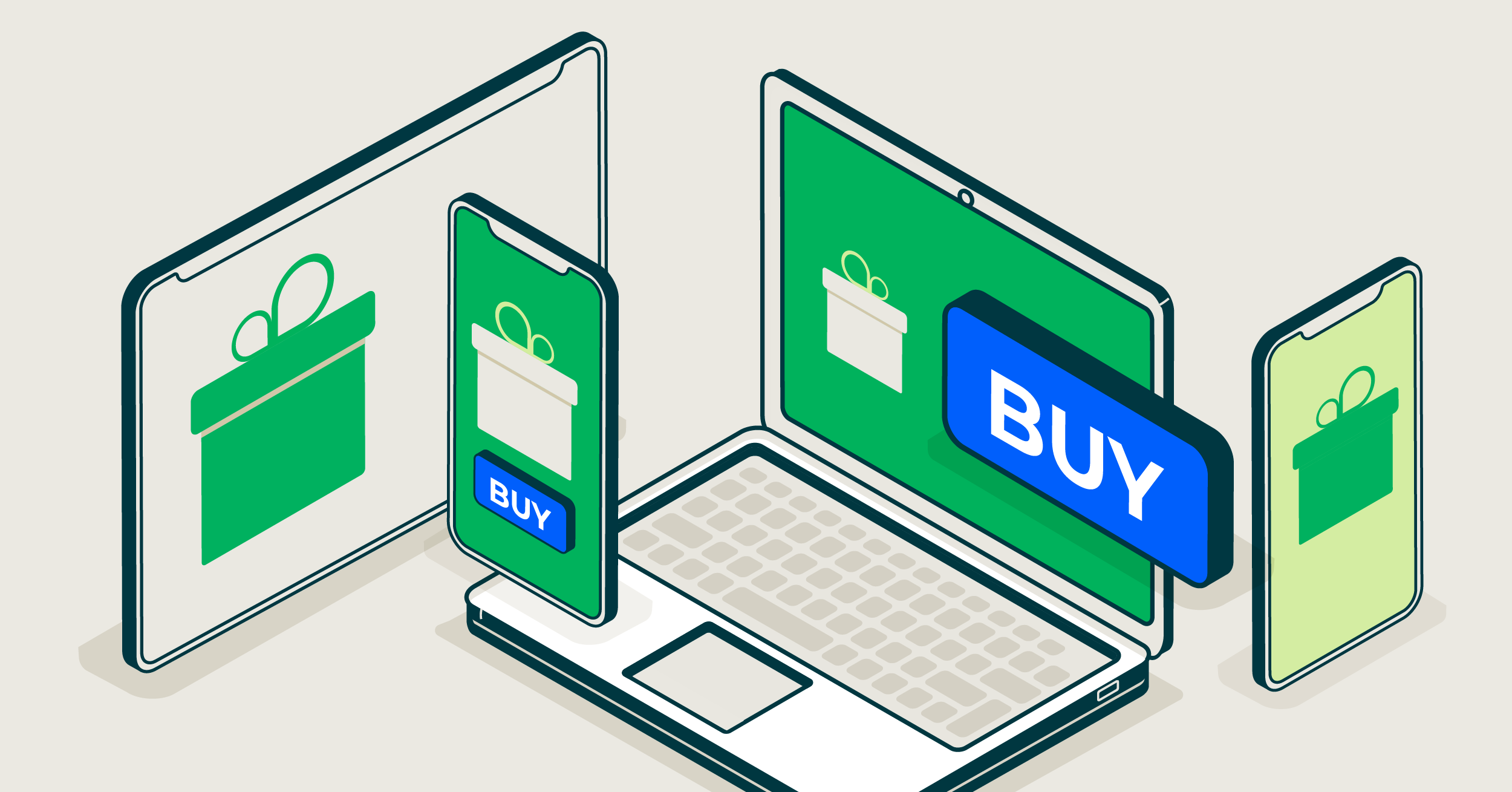- Apr 11, 2023
- 7 min
Ecommerce trends 2023: 3 trends that are changing online shopping
Magnolia in action
Take 12 minutes and a coffee break to discover how Magnolia can elevate your digital experience.
Some "ecommerce trends" have been preached for years but have hardly caught on - see the metaverse. Some have long since become standard - see Click & Collect. And still, others come along almost unnoticed and are preparing to change the industry profoundly.
We take a look at the last of these in this article. Instead of making long lists, we analyze three top ecommerce trends of 2023 that will change online shopping.
1. Ultra-convenience and hyper-personalization
Everyone talks about convenience: shopping must be as comfortable and effortless as possible for customers. But let's be honest; not much has changed in many online stores in recent years. Browse through catalogs, add the product to the shopping cart, and order.
But things are changing at retailers and manufacturers. Mainly for three reasons:
After the (temporary) end of the COVID-19 pandemic, growth rates in ecommerce are declining, while competition is increasing at the same time. Customers have to be enthused in order to win them over.
You can't win against Amazon and other top dogs with the bread-and-butter themes of selection, fast delivery, and low prices. Unique selling points are required.
Meanwhile, technology is available to deliver new, exceptional customer experiences.
Two buzzwords describe what ecommerce companies are using to gain market share and customer loyalty: Hyper-personalization and ultra-convenience. The two go hand in hand.
How can ultra-convenience – i.e., the highest level of convenience and user-friendliness – be created? On the one hand, through the perfect interplay of all factors: intuitive user interfaces, lightning-fast loading times, high-quality product presentations, personalized recommendations, simple payment options, seamless check-outs, and instant rewards, for example, through gamification.
On the other hand, it is no longer enough to offer the customer all the options and let him choose. Instead, ideally, what the customer wants, what is most convenient, and what exactly should be offered to him should already be "anticipated."
Hyper-personalization contributes to this goal. Offers, services, and content must be tailored as individually as possible to each customer in order to meet their expectations perfectly.
Let's look at some case studies of how such concepts can be implemented.
Personalized omnichannel customer journeys
Case study: A customer wants to plant his terrace and searches for palm trees in the online store of a garden center chain. The palm tree can also be ordered and delivered online. However, the store suggests that the palm tree be viewed directly at the nearest garden center. If desired, it will already be packed for him, and he can arrange a personal consultation on plant care. If the palm is too big for the car, the customer can still have it delivered.
Case study: A customer tests various smartphones in the electronics store. She can take a photo of a model, upload it to the customer app, and look up how much it costs in the online store. The app offers her additional content and possibly a discount. She can redeem this directly in the store or when ordering online.
As already mentioned, the customer journeys offered must be personalized and tailored to the context. For example, depending on the time of day, the customer's location, or their previous habits. For example, if the retail store is currently closed or too far away, online ordering is recommended - or the incentive for in-store pickup must be stronger.
Personalized purchase advice
Case study: A customer wants to redecorate her living room. She takes photos of it and uploads them to the online purchase advisor of a furniture store. The software measures the room and analyzes the color spectrum of the existing furnishings. The customer then receives personalized suggestions for decorations that fit the room. She can view the products directly in her living room using the augmented reality function and click to add them to the shopping cart.
Improved technologies in the field of artificial intelligence and augmented reality mean that "real" virtual purchasing advisors can now be developed to provide truly personalized advice.
Real-time service around the clock
Waiting until the hotline opens the next day again? That doesn't sound ultra-convenient. Service offerings must be available at all times. Customers want help around the clock.
In addition to personal customer service, chatbots (conversational AI) are playing an increasingly important role in this context. They are not only becoming more intelligent but must be equipped with more rights. For example, a chatbot could initiate returns and refunds up to a certain maximum amount without a human having to release the payment.
Intelligent search and recommendations
The good old search function is also coming back into focus as a result of the convenience and personalization trends. Customers don't want to spend a long time trying out which search terms they can use to find the products they want.
Instead of single words, search should understand entire sentences and questions - thanks to conversational AI, this is working better and better. Search results should be personalized based on customer history and the preferences of similar customers.
Or even better: customers don't have to search at all but are automatically recommended suitable products that might interest them.
2. Permission marketing
Ultra-convenience and hyper-personalization both presuppose one important factor: the ecommerce provider must know the customer as precisely as possible. In other words, he needs as much customer data as possible.
Data collection has become much more difficult in recent years due to the GDPR and other regulations. Unsolicited tracking or use of external data (e.g., from Facebook or Google) are taboo; third-party cookies are increasingly blocked.
This means that in order to be able to offer personalized experiences, companies must first collect data themselves and secondly obtain the user's permission to do so. Permission marketing is experiencing a renaissance as our second ecommerce trend in 2023.
The faster that customers in the store provide their data and consent to track, the faster and more accurate experiences can be tailored to them.
Brands or store operators must therefore achieve a conversion as quickly as possible, for example, through
Registration as a customer
Newsletter subscription
Download a customer app
Registration for the loyalty program
How do they do it? Through incentives. The aforementioned loyalty program is one way, special offers or special functions. Customers are more likely to download apps if they get additional functions or benefits, such as free Wi-Fi in the store, special discounts, or a payment function.
In any case, customers need to understand how they themselves benefit from giving away data and being tracked. Well-known brands and stores have it easier by nature because they enjoy greater trust. But lesser-known providers can also come up with good ideas - they just have to test them out.
Otherwise, store operators have limited options for personalization. With user scoring and segmentation, a user is assigned to a user segment based on his actions in the current session. They are shown content and offers that are also popular with other users in the same segment. Users must also consent to this, but they do not have to be known. Or a store conducts completely anonymous A/B tests; no consent is required for this.
Also interesting: The current trends in B2B ecommerce
3. Sustainability
Our third ecommerce trend also sounds a bit stale at first, but it's not. The topic of sustainability is really picking up speed at the moment. The EU and Germany, as legislators, are partly responsible for this: for example, through the obligation to publish sustainability reports, the Supply Chain Sourcing Act, or the ban on destroying returned products.
At the same time, the topic of sustainability is present every day in society, and the media and customers have become more sensitive. 63% of consumers in 2022 said in a Deloitte study that they take sustainability aspects into account in their purchasing decisions. This is more than in the previous year, despite the tense economic situation.
Already familiar from many stores is the option of offsetting the CO₂ emissions for parcel delivery. Customers have to pay a small surcharge for this, with the money being donated to offset projects, such as reforestation. Providers can make such options more attractive and use them to boost customer confidence. For example, they could issue customers a personalized certificate showing "their" newly planted tree and some information about the project.
Online retailers can open up new markets with sustainable products. IKEA shows how its own products can be used to create a sustainable life. Returns are sold at lower prices. The latter, in particular, offers great potential for ecommerce as demand for used and refurbished products is rising. Consumers are delighted with these products on two counts: a clear conscience and a lower price. With the help of external platforms and fulfillment providers, online stores can integrate such used marketplaces into their product ranges relatively easily.
However, the majority of customers are not prepared to pay (significantly) more in the name of sustainability. The hunt for low prices continues. Ecommerce companies must therefore offer more without charging more in the end. The solution to this is, among other things, is consistent automation and personalization - which closes our circle of ecommerce trends in 2023.










